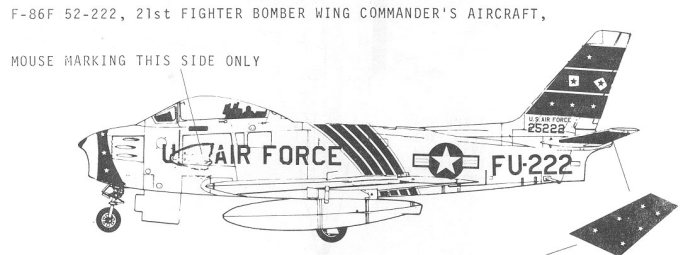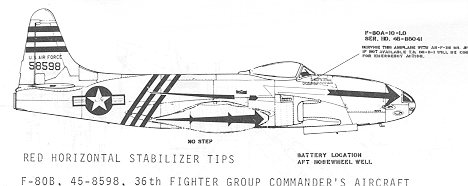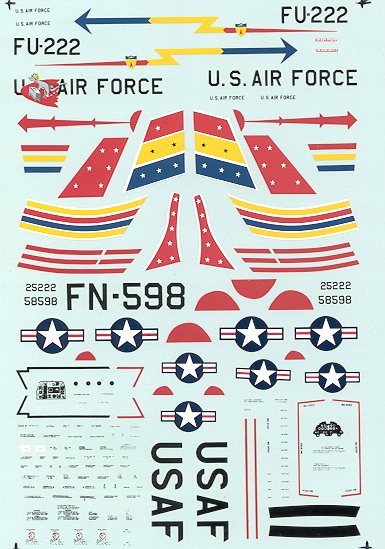
|
Sheet # |
Microscale 72-354 for F-80B & F-86F |
|
Price: |
$6.00 |
|
Units: |
21 FBW and 36 FG CO's birds |
|
Review By: |
|
|
Notes: |

 During the early 1950s, when one thought of the
F-80 and F-86, the units fighting in Korea are those that popped into mind.
However, much US air power was concentrated in Europe. With the very strong
threat of war with the Soviet Union hovering over everyone's head, it was
important for the US and other NATO allies to keep a very strong presence in
Europe. Though many Europeans are not willing to admit it, the war took a very
heavy toll on the ability of these countries to stop Soviet aggression and were
it not for the huge numbers of Americans in theater, Europe may very well have
looked quite different at the time.
During the early 1950s, when one thought of the
F-80 and F-86, the units fighting in Korea are those that popped into mind.
However, much US air power was concentrated in Europe. With the very strong
threat of war with the Soviet Union hovering over everyone's head, it was
important for the US and other NATO allies to keep a very strong presence in
Europe. Though many Europeans are not willing to admit it, the war took a very
heavy toll on the ability of these countries to stop Soviet aggression and were
it not for the huge numbers of Americans in theater, Europe may very well have
looked quite different at the time.
 Most of these European based units had the
latest and greatest aircraft, just like what was being flown in Korea. These
planes were also quite colorfully marked, as the 50s were the era of bare metal
and lots of color in the USAF. Thankfully, the USN kept its color another couple
of decades longer! The most colorful of all of a wing or group's aircraft were
those of the wing or group commander. These planes were decked out in the colors
of their prospective squadrons. Usually there were three squadrons per wing or
group, but I have seen boss birds with as many as six!
Most of these European based units had the
latest and greatest aircraft, just like what was being flown in Korea. These
planes were also quite colorfully marked, as the 50s were the era of bare metal
and lots of color in the USAF. Thankfully, the USN kept its color another couple
of decades longer! The most colorful of all of a wing or group's aircraft were
those of the wing or group commander. These planes were decked out in the colors
of their prospective squadrons. Usually there were three squadrons per wing or
group, but I have seen boss birds with as many as six!
This is an older Microscale sheet so has good instructions and full insignia and data for both aircraft.
The first aircraft is an F-86F from the 21st Fighter Bomber Wing. It is decked out with lots of color in the tail and fuselage band.
The 36 FG F-80B is not quite up to the garishness of the Sabre, but does have red tank and fuselage bands with multi-colored tail bands and fuselage lightning bolt.
Both are quite nice schemes and will really look different amongst all those Korean War Sabres and Shooting Stars.
Review copy courtesy of me and my wallet!
If you would like your product reviewed fairly and quickly by a site that averages over 2,000 visits a day, please contact me or see other details in the Note to Contributors.